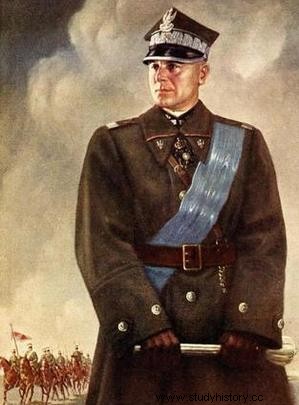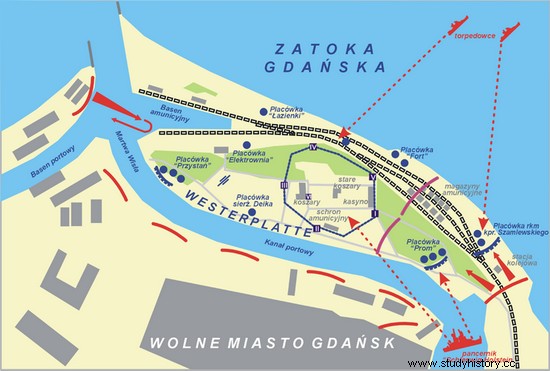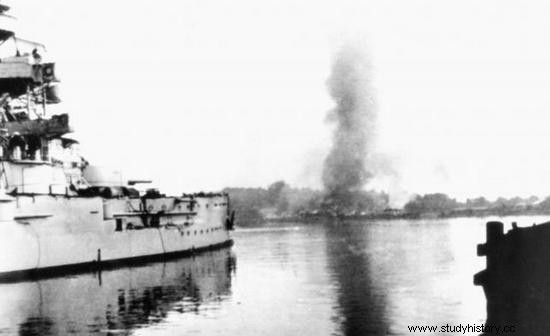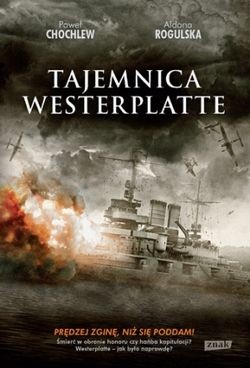Many myths have arisen around the defense of Westerplatte, and the staff of the Military Transit Depot have already been recognized years ago as an undisputed collective hero. But do all soldiers really deserve this name? Definitely not.
The beginning of the legend of a handful of defenders relentlessly facing the enemy dates back to September 1939. A lot of the credit goes to Polish Radio, which from the second day of the struggle until the surrender of the facility informed listeners that Westerplatte was still defending itself .
The Commander-in-Chief Marshal Edward Śmigły-Rydz also made his contribution. It was he who, on September 4, 1939, decorated each of the Westerners with the Order of Virtuti Militari and was promoted by one rank.

The march played a significant role in popularizing the legend of Westerplatte defense. Śmigły Rydz, who awarded each of the Westerners with the order of Virtuti Militari.
After that, the story began to live a life of its own, and for decades hardly anyone tried to confront it with the facts. Meanwhile - as Jarosław Tuliszka rightly noted in his book "Westerplatte 1926-1939":
Among the defenders of Westerplatte we can find many characters that we can confidently call heroes […] does not mean [it is] that today, so many years after those events, we can look uncritically at all the soldiers who were then in the defended repository. In addition to great heroism, there are also examples of sheer fear and even cowardice.
They left an injured colleague for his death
Strong words that demand evidence. So let's start with the story of Corporal Andrzej Kowalczyk. He was part of the staff of the "Prom" post, commanded by Lieutenant Leon Pajak. While repelling the first German strike, its crew was shot from behind.
As it turned out, the volleys were fired from the German police guardhouse, located at the gate of the main depot. In this situation, Lieutenant Pająk ordered Corporal Kowalczyk and two of his colleagues to neutralize the threat.
The task was completed, but the shooter Bronisław Uss died and Corporal Kowalczyk received two shots in the chest. Seeing this, Ensign Jan Gryczman - Pajak's deputy - ordered two soldiers to carry the wounded man to Guardhouse No. 1.

Westerplatte plan with marked Polish facilities (author Lonio17; license CC BY-SA 3.0)
However, due to the strong enemy fire from machine guns and - as they later claimed - Kowalczyk's requests, left him for certain death about 200 meters from the target . They escaped themselves, saving their own lives. This is one of the most controversial episodes in the entire defense. Even now it is difficult to make an unambiguous assessment.
Deserters. Were they there or they weren't?
For several years, there has also been a lively discussion about whether there were cases of desertion and arbitrary abandonment of combat positions during the defense. If you are to believe the defenders' accounts, the answer to this question must be in the affirmative.
They took place on September 2nd. Their immediate cause was - carried out in the afternoon of that day - several dozen minutes' raid of 58 Junkers Ju 87B dive bombers Stuka .
For example, the gunner Władysław Jakubiak, who was in the barracks when the bombing began, could not withstand the tensions. After two bombs hit them, he ran out of the building into the courtyard and died almost immediately.
A similar situation took place in Guardhouse No. 1, where - after the door was ripped out as a result of an explosion - some of the crew tried to escape. It was only the threat of platoon member Piotr Buder using weapons that made them change their minds. And not all of them, because two soldiers, taking advantage of the confusion, left their post and ran to the barracks.
However, the staff of the "Elektrownia" facility gave up their position entirely, which decided that the Germans had carried out a gas attack. First they went to Guardhouse No. 4. They stated that it was the end of the fight but the commander of the guardhouse - Corporal Władysław Goryl - replied that he would not give up.
This, however, did not convince them, and they all marched to the barracks as one man, wearing gas masks. Thus, they left their episode unprotected. The crew of the "Fort" facility did the same. Its commander later explained that they did so because they were sure that they would be relieved by another unit.

Schleswig-Holstein is shelling Westerplatte.
When writing about the issue of desertion among the defenders of Westerplatte, it is difficult not to mention the topic of the alleged execution of four soldiers. They were to be shot on September 2, precisely for voluntary evasion of their duties. Did such an event take place? Given the lack of any accounts of the surviving defenders, this story should be approached with a great distance.
Can you blame them for not all of them being heroes?
In conclusion, it is worth reaching again for the book by Jarosław Tuliszka, already cited here, who sums up the whole matter in this way:

The article was inspired by the book by Paweł Chochlew and Aldona Rogulska entitled "The Secret of Westerplatte" (SIW Znak 2013)
Can you blame the soldiers for not having to endure the toughest times? No - they were ordinary people. Not all are heroes. They were driven by ordinary human reflexes […]. The point is not to make the entire Westerplatte crew heroes for the sole reason that they found themselves in the Depot at that time.
In other words. You shouldn't treat all defenders alike, because then we'll underestimate the real heroes who actually deserve the name. This should be borne in mind when once again someone becomes indignant that historians and publicists are trying to fight the myths that have arisen around the defense of the Military Transit Depot.
Inspiration:
- Paweł Chochlew, Aldona Rogulska, The Secret of Westerplatte , Social Publishing Institute Znak 2013.
